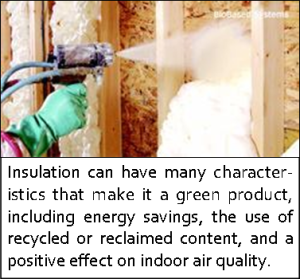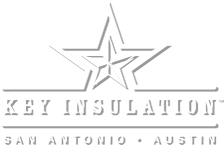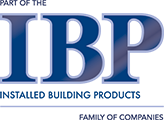As a primary energy-saving product in the home, insulation is inherently “green.” But most types of insulation have green properties beyond just the R-value, and dealers looking to promote and sell green products can leverage the sustainable selling points offered by many of today’s insulations.
Understanding what makes products green and which carry which green attributes is important. “There are different shades of green, and the home building industry has to do some work in finding out what they are …, not just take it at face value when a product claims to be green,” advises Teresa Orofino, marketing communications supervisor for Icynene.
Energy efficiency, or R-value, is the most important characteristic of any insulation. But other aspects of a product also play a part in its sustainable properties, including content, raw materials sourcing, manufacturing processes, embodied energy, environmental impact, and effect on the home environment, says Mike Muccio, vice president of marketing for BioBased Systems.
Using recycled content is an environmentally sensitive feature that most insulation products now have. Cellulose insulations like Applegate’s Applegate Insulation and U.S. GreenFiber’s Cocoon use 80 to 85 percent post-consumer paper. Fiberglass insulation products from Johns Manville, CertainTeed, Guardian Fiberglass, and Owens Corning use 20 to 35 percent recycled glass, depending on the manufacturer.

Some products utilize industrial and agricultural by-products, as well as naturally renewable materials. For example, silica sand—one of the earth’s most abundant and renewable materials—is a primary ingredient in fiberglass insulation. In some spray polyurethane foam (SPF) insulations, such as BioBased Systems’ BioBased 501 and North Carolina Foam Industries’ Insulstar, soybean oil–based and sugar beet– or corn sucrose–derived polyols used to replace a percentage of petroleum-based polyols. Bonded Logic’s UltraTouch and InnoTherm from InnoTherm Inc. use waste from denim manufacturing as the primary material, while waste material from steel manufacturing is turned into mineral wool insulations like ThermaFiber’s blown-in ThermaTech System.
Limiting harmful impacts on indoor air quality (IAQ) is another important green characteristic that many insulation products claim. Manufacturers of cellulose and cotton-fiber insulations say their materials do not contain chemicals that have harmful health effects. Many SPFs, including Icynene and BASF’s Enertite, now use either water or ozone-friendly chemicals as blowing agents. Even fiberglass insulations that emit low levels of harmful gases like formaldehyde have a minimal impact on IAQ. Johns Manville has removed formaldehyde entirely from its fiberglass products. Knauf, Guardian, CertainTeed, and Owens Corning fiberglass products and BASF’s SPF product have been verified for acceptable levels of chemical emissivity through the GreenGuard Certification Program.
As energy costs continue to rise, consumers are more willing to pay for green features, and green and sustainable building is becoming more mainstream. “The people who are marketing the materials contractors use really need to understand that and be in tune with what’s happening,” says Dan Lea, executive director for the Cellulose Insulation Manufacturers Association.




